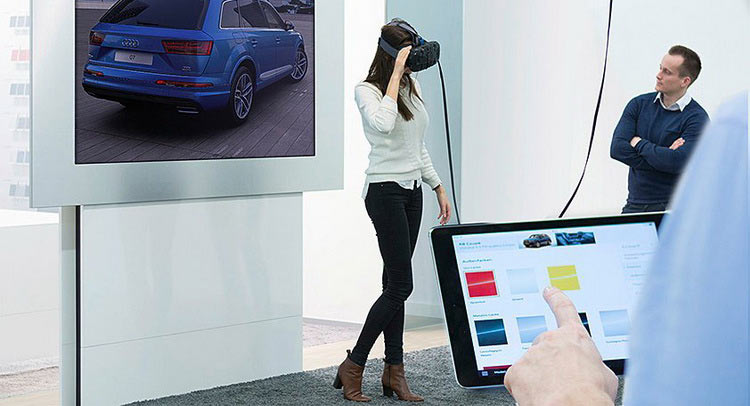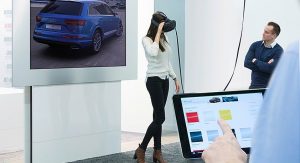One of Audi’s most underrated gizmos presented at this year’s Consumer Electronics Show was definitely their Nvidia-powered virtual reality system.
Together with Nvidia and retail suppliers Oculus and HTC, Audi presented the virtual showroom, a “digital place” where customers can explore their entire range of vehicles in vivid detail using goggles. People will be able to build, examine their cars and even experience them, in a range of environments.
The first installation of the system in the US is expected to take place later this year, but until then, CES show-goers got the chance to configure an Audi of their choice and conjure up every combination of features, gadgets, equipment and even colors.
The driving force behind the virtual showroom has been the success of Audi’s digital powerwalls from their London and Beijing dealerships, and if you’re any type of gadget-freak, you’ll probably love the chance to “meet” your new car, way before it is even delivered to you.
The cars used by Audi can be broken down graphically into 7 million polygons, which means that in order to render each model in 3D, Audi needed a whole lot of processing power. In fact, in order to create a virtual reality that would impress the average consumer, the system had to be able to run at a race of 90 frames per second.
Because two years ago, no graphic engine on the market could display Audi’s vehicles in virtual reality at their required level of execution, the German manufacturer went and developed its own graphics engine, aimed specifically at virtual reality displays. After that, they gave it to Nvidia who optimized it.
In the near future, Audi customers will be able to configure the exact car they want and experience it fully, even if it’s nowhere to be seen in the dealership.




